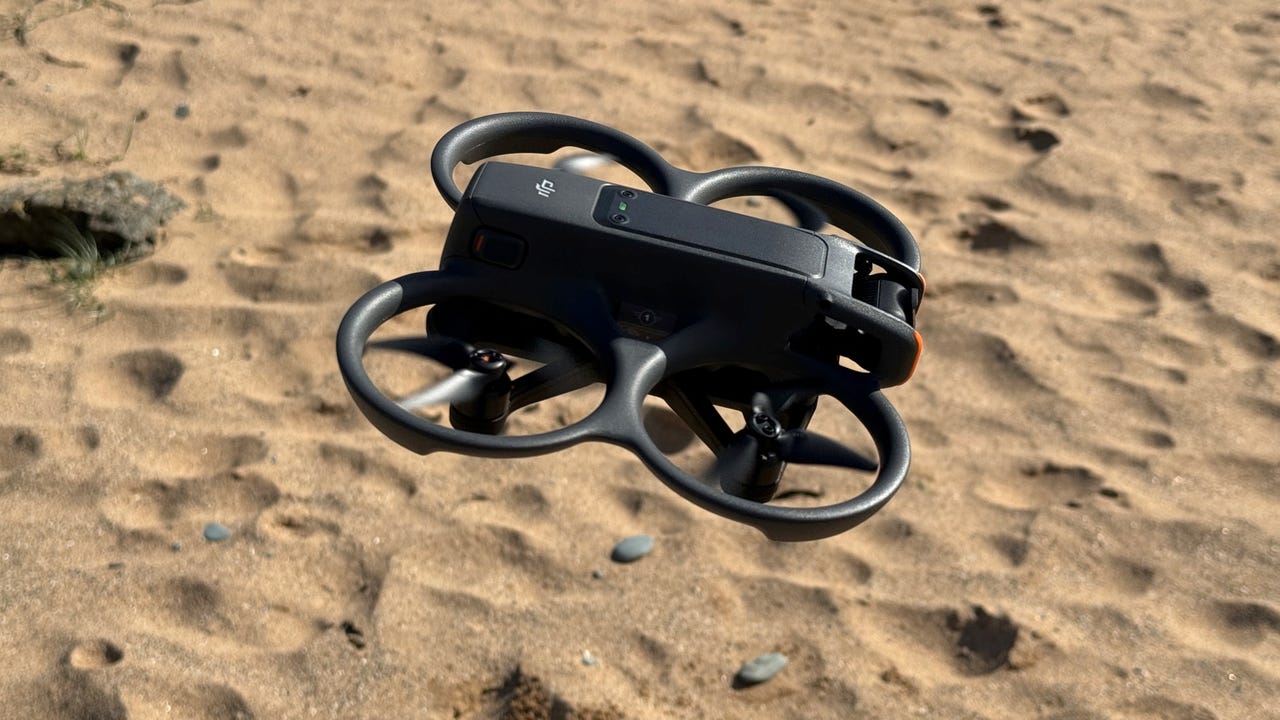
































For me, drones are more than just gadgets; they're precision flying tools designed and built for nailing the perfect shot, be it a photograph or a video clip. Every flight is pedantically planned, ensuring that when my hands are on the controller, my thumbs are on the sticks, and the drone is in the air, I can smoothly, accurately, and calmly execute the maneuvers needed to capture that magic moment.
Also: The best drones you can buy: Expert tested
Flying the newDJI Avata 2 FPV drone has completely flipped the script for me, transforming what was previously a meticulous activity into an absolutely exhilarating ride. It felt like I was Wile E. Coyote, strapped to an ACME rocket, zooming across the landscape in a desperate chase after the Road Runner.
View at AmazonNormally when you're flying drones, you're doing it with a controller in your hands and your eyes on a screen, watching both what the drone's camera is capturing and the bigger picture around you. And pretty much everywhere has rules that say you must keep the drone where you can physically see it -- meaning it has to stay within your visual line of sight (VLOS). There are exceptions if you hold certain qualifications that allow you to fly beyond the visual line of sight of the drone (BVLOS), but that's not something most hobbyists will have.
Also: Are DJI Mini drones now non-compliant for commercial use? [FAQ]
With an FPV (First-Person View) drone, it's like stepping into another league. You pop on a pair of goggles, and suddenly, it's as if you're sitting right in the drone, zooming through the sky. Since you're only seeing what the drone's camera sees, it's easy to lose track of everything around you. That's why most countries have rules that say you need to have a buddy -- a spotter -- to watch the drone and everything around it for you to give you a heads up if a hazard, such as an aircraft or a person, enters the area you're flying in.
At under 400 grams, the DJI Avata 2 feels super lightweight yet much more robust than standard drones
 Hot Tags :
Innovation
Transportation
Hot Tags :
Innovation
Transportation